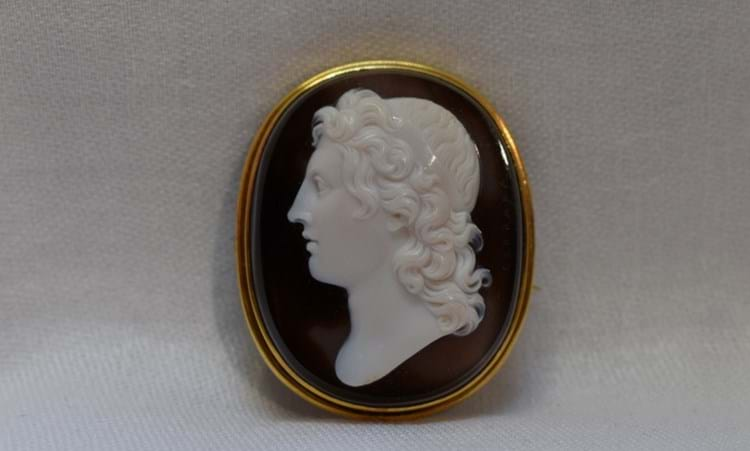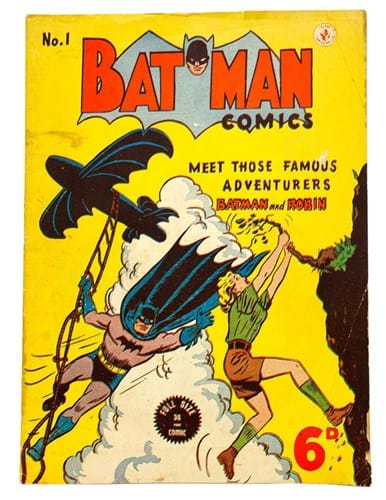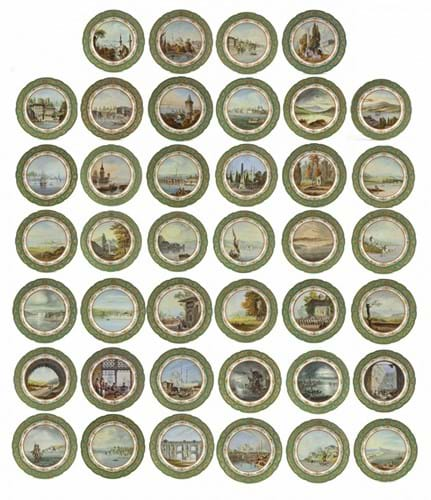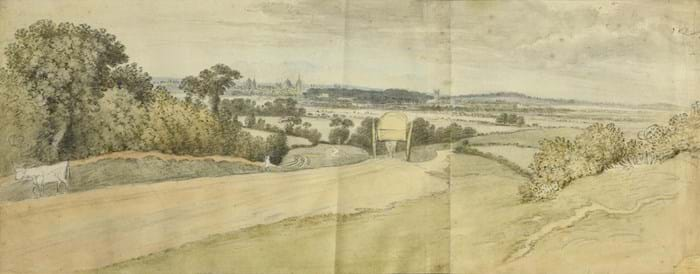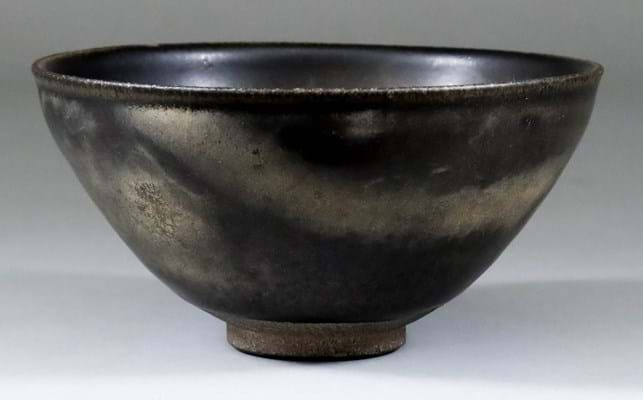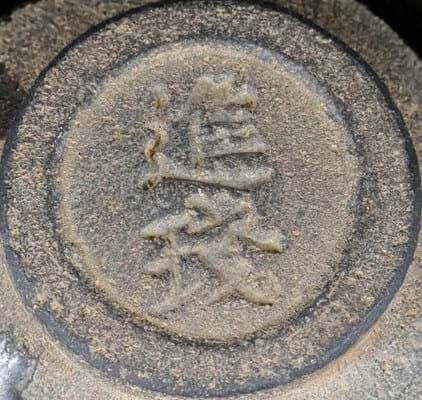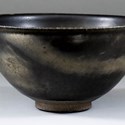1. Neoclassical agate cameo – £17,200
Milnthorpe, Cumbria firm 1818 Auctions posted a new house record for jewellery when this 33mm x 42mm neoclassical sardonyx cameo mounted in gold sold for £17,200 as part of a timed sale closing on June 7. The estimate was just £200-300.
Key to its appeal was outstanding quality and the presence of the signature Cerbara for a member of the Rome dynasty of medallists and gem-cutters. Given a probable date of c.1820 the most likely candidate is Guiseppe Cerbara (1770-1856), master of the papal mint from 1822 who oversaw the creation of papal medals before he was succeeded by his younger brother Nicolla Cerbara (1796-1869).
Against interest from Hong Kong, the brooch (in good condition save a minute area of discolouration) was eventually bought by a London jewellery dealership.
2. Australian copy of ‘Batman 1’ – £3050
In June 1940, after local protests about the volume of cheap overseas magazines and comics saturating the Australian market, the government placed a ban on the importation of American comics and overseas syndicated reprints. After the Second World War, local publisher KG Murray took advantage of these new opportunities and began publishing both original Australian comics and reprints of US comics including some of the DC superhero titles.
Batman Comics (soon retitled simply Batman) was first printed by Murray in 1950. This copy of issue No 1 was offered by Comic Book Auctions in an online sale that closed on June 7. Estimated at £40-500, it caused something of a surprise when it sold via thesaleroom.com at £3050.
In 1959 the Australian government lifted import restrictions and US publications became available in once more.
3. Paris porcelain plates – €36,000
A set of 40 porcelain cabinet plates decorated with views of Constantinople (Istanbul) sold for €36,000 (estimate €20,000-30,000) at the June 4 sale held by Dutch firm Oriental Art Auctions, Hattem.
Each plate, made by one of the many Paris factories operating in the early 19th century, has a different landscape view, identified on the reverse. The scenes are taken from the engravings in 'Voyage Pittoresque de Constantinople et des rives du Bosphore' by Antoine Ignace Melling (1763-1831).
Melling was imperial architect to Sultan Selim III and Hatice Sultan and he spent 18 years with the Ottoman court. He published his most influential work between 1809-19.
4. View of Oxford from 1789 – £4200
The German-born watercolourist and musician John Baptist Malchair (c.1730-1812) was a key figure in 18th century Oxford. Appointed leader of the Oxford Music Room, he also worked as a drawing master, producing hundreds of historical, architectural and topographical sketches of the city and its surrounds.
His work – admired by John Constable among others – features many of the medieval Oxford buildings which were destroyed following the passing of the 1771 Mileways Act.
This large 12in x 2ft 6in (30 x 76cm) watercolour over pencil sketch, offered for sale on June 4 by Charterhouse Auctions in Sherborne, is a typical Malchair ‘on the spot’ panorama formed by joining together two sheets of paper. It is titled and dated in the artist’s hand A Distant View of Oxford from the Abingdon Road at the distance of a Mile and three quarters just above South Hingley at the entrance of the Upper Lane leading to Bagley Wood, July 20 1789.
It has an old label verso for the venerable London art dealership Colnaghi. It was estimated at just £100-200 but found a buyer at £4200.
5. Jian ware teabowl – £15,500
This Jian ware (hare’s fur) teabowl dates from the 12th century and the height of the Northern Song dynasty. In addition to its distinctive olive-black glaze, it is impressed to the base with a two-character mark 'jinzhan' – translating as ‘presentation tea bowl.
The cataloguer at Canterbury Auction Galleries explained that, while Jian ware was not made in the imperial kilns, it was much prized at court and pieces marked in this way suggest some were supplied as tribute.
As part of the June 6-7 sale it sold to a buyer using thesaleroom.com at £15,500 (estimate £400-600).


